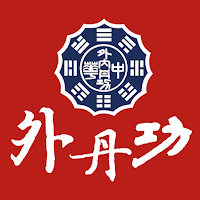Calisthenics-Foreword
Foreword, Han Calisthenics, collected from Chinese Waitankung Illustrated in 1983. (Chinese Edition)
〈Back to the Contents of Training Materials for Chinese Waitankung〉
Foreword
According to the report of the United Daily News in July, 1977, the silk manuscripts of Mawangdui were unearthed, in which the calisthenic graphs can help people to recover from illness and strengthen the body. After studying these 14 graphs, the author discovered that the persons on these graphs are different in their gender and ages. The primary activities focus on exercising the arms and legs. Some of them are arm activities, activities for the waist and crotches, and calisthenics in varying steps. These movements are all in rhythms and matching breathing. However, some of them are over acting and unmatching breathing with rapid activities.
After chewing over and personal studying by the author, these calisthenics activities are similar to Waitankung and abdominal breathing. The calisthenics is a suitable workout for the young, middle, and old-aged people. It can activate the tendons, bones, bloods, and meridians. It can also make breaths go smoothly, especially guiding the breaths. In the Han dynasty, breathing exercises might be called calisthenics generally.
Chang Liang in the Han dynasty stayed behind closed doors in his late years to exercise calisthenics. The alchemy sect of Tunpichung has words about the following."Guide the Chi in harmony, induce the body in softness, become an immortal while still being alive, and not become a zombie after death." We do not talk about becoming an immortal or zombie. However, the state of the soft body and harmonious Chi is so elegant and in high rank.
The calisthenics graphs in the silk manuscripts of Mawangdui can match to the Waitankung movement frameworks and postures with matched breathing. Therefore, Waitankung can be regarded as one of calisthenics.
The Chang Liang mentioned above is different from the Liouhou Chang Lian, which is mentioned in the breatharianism without eating foods but only subsisting on the air. It can refer to the nineteenth page of the volume of Emperor of Gaozu of Han in the book of "Easily Knowing Records with Outline Identification" published by the Shanghai Jinzhang publisher in 1944.
This book reminds the author about the Proofreading Catalog edited by Zheng Qiao in the Song dynasty. In the part of Taoist in that Catalog, it consists of the 15th item of respiration with 74 parts and 94 volumes, the 16th item of fetal breaths with 74 parts and 94 volumes, the 17th item of inner sighting with 23 parts and 25 volumes, the 18th item of calisthenics with 20 parts and 22 volumes, the 19th item of breatharianism with 8 parts and 8 volumes, the 20th of inner alchemy (Neitankung) with 40 parts and 44 volumes, the 21th of outer alchemy (Waitankung) with 203 parts and 310 volumes. It shows that the books of Waitankung are the largest. However, it only has the catalog without leaving any books. It can infer that the respiration, fetal breaths, inner sighting, calisthenics, breatharianism, inner alchemy, and outer alchemy are all independent.
On the other hand, it seems that these methods can be fused to be exercised together. Such as, breatharianism calisthenics, calisthenics inner sighting, calisthenics respiration, calisthenics circling, etc.. The purpose of teaching Waitankung publicly by the author is to improve the physical and mental health and happiness of our nationals.
The inner sighting is still not taught since it is very difficult to exercise. The inner sighting with Waitankung and Neitankung might be taught in the future, which depends on having experiences widely for the exercisers, the health state of the author, and having the environment without interference. Although the author's skill and efficacy is still not enough, the teaching methods followed from the ancient times are not lost.
The calisthenics graphs of getting rid of diseases in the silk manuscripts of Mawangdui seem to be simplified without continuity. The author then fills in the losses by referencing the principles of Waitankug and the methods of exercising the tendons and muscles for Tungpichung. Then the unearthed calisthenics graphs in Han silk manuscript are complete.
There are 27 calisthenics movements after keeping the essences and eliminating the cumbersome. Without eliminating the old name of calisthenics in the Han dynasty, it is named as The Strengthening Body Calisthenics, in short as the Han Calisthenics.
The Han Calisthenics should be practiced before exercising Waitankung, which takes less than 20 minutes. If the young people only exercise the Han Calisthenics but not Waitankung, the time should be extended to 35 or 50 minutes. The Han Calisthenics can strengthen your muscles and tendons, and can improve the circulation of Chi and blood smoothly.
Before exercising Waitankug for the middle and old-aged people, they should practice the Han Calisthenics at first for 10 or 20 minutes. The Han Calisthenics can make muscles lively, make tendons easy, make internal organs harmonious, and make the chest and heart open and clear. After that, exercising Waitankung can even strengthen your body and have longevity.



